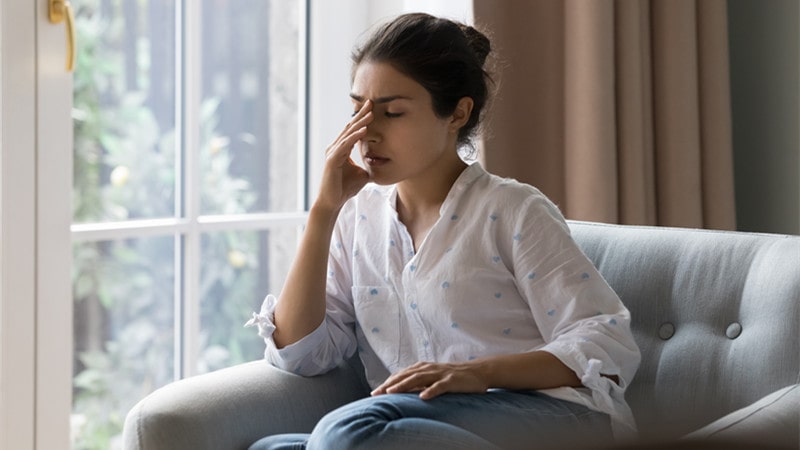At least 8.3% of adult Americans – which is around 21 million people – had a severe depressive episode in 2021. One of the most prevalent mental health conditions in the nation today is depression.
However, the word depression is frequently used indiscriminately to characterize how individuals feel following a difficult workweek or during a breakup. But depression and unhappiness are not the same thing.
Specific symptoms set depression apart from the kind of all-around melancholy that everyone encounters occasionally.
So, let’s dive right into identifying depression.
7 Alarming Signs To Identify Depression To Know When To Seek Diagnosis
The National Institute of Mental Health says that physical, mental, and emotional symptoms such as the following are some of the major signs of depression.
1. Hopeless Outlook Towards Life
Though not all racial and ethnic groups suffer pessimism in the same way, sad people frequently do. Sad individuals might have feelings of worthlessness.
Some individuals with depression also deal with inappropriate guilt. They could frequently ask themselves, ‘What’s the point?’ or say, ‘It’s all my fault.’
Among the top three reasons people claim to have poor mental health are loneliness and isolation.
2. Lack Of Interest In Activities
Depression has the power to sap people’s joy and satisfaction from the things they love.
Major depression is often indicated by a lack of interest in or withdrawal from activities they used to enjoy, such as sports, hobbies, or going out with friends.
Some signs of serious depression are also impotence and a diminished desire for sex.
3. Increased Sleep Problems And Fatigue
One of the most crippling symptoms of depression can be an overpowering sense of exhaustion and a lack of energy. This may result in oversleeping.
These symptoms might be mistaken for other illnesses, such as chronic fatigue syndrome, so medical providers may often overlook the actual cause.
Insomnia and depression are related, and they can reinforce one another. Anxiety may result from a restless night’s sleep.
4. Anxiety
Anxiety symptoms often coexist with depression symptoms.
These might include sensations of strain, uneasiness, or restlessness. Sudden sensations of fear or panic, elevated heart rate, breathing too quickly, sweating excessively, shaking, or twitching in the muscles are also visible in people with depression.
Moreover, depressed people might often face difficulty concentrating or struggle to think effectively about anything other than one main obsession.
5. Changes In Weight And Appetite
Eating and weight fluctuations are common among depressed individuals. Everybody may have a different experience with this.
While some people won’t feel hungry and lose weight, others will gain weight due to increased hunger.
6. Inadequate Control Over Emotions
Mood swings brought on by depression can vary greatly. An angry outburst occurs in one minute. The next, uncontrollably, tears come down.
Most of the time, their mood is not related to the happenings surrounding them. So, loved ones often get confused by their mood.
7. Suicidal Thoughts
One alarming symptom of depression is suicidal thoughts. They may often discuss things like how life would be after death or whether they can restart after death. Some may even discuss suicidal methods randomly and ask which methods have the least chance of survival.
Moreover, if a person already attempted suicide once, that’s also a symptom.
What To Do Next?
Now that you have identified the signs of depression, here is what you should do next.
1. Inform your physician if you encounter any of these warning indicators of depression. Unfortunately, just half of Americans who have a depressive episode ever seek or receive treatment, according to the National Alliance on Mental Illness.
2. When you discuss your symptoms with your doctor, you will be given the names of reputable psychologists, psychiatrists, or therapists who can help you.
3. Depending on circumstances, treatment options may include counseling, medication, or other complementary and alternative medical procedures.
The optimal course of action for you will be discussed with your doctor, so don’t be shocked if it changes as your therapy does.
4. Since depression cannot be treated the same way for every individual, look for the best rehabs around you to get help and advice from certified professionals. They will independently evaluate you and create a holistic plan based on your situation.
5. When people with depression are at immediate risk of hurting others or themselves, people around them must call the local emergency number, stay with the individual until help arrives, and listen to the person without judging, arguing, or threatening.
Additionally, any harmful objects like knives, guns, and medication should be kept out of sight.
Conclusion
Never think that you have to handle depression by yourself. Although talking about mental health problems may be challenging, don’t be scared to get the support you need to get your mind back. Remember, the best favor you can do yourself is to get treatment from a mental health professional!




